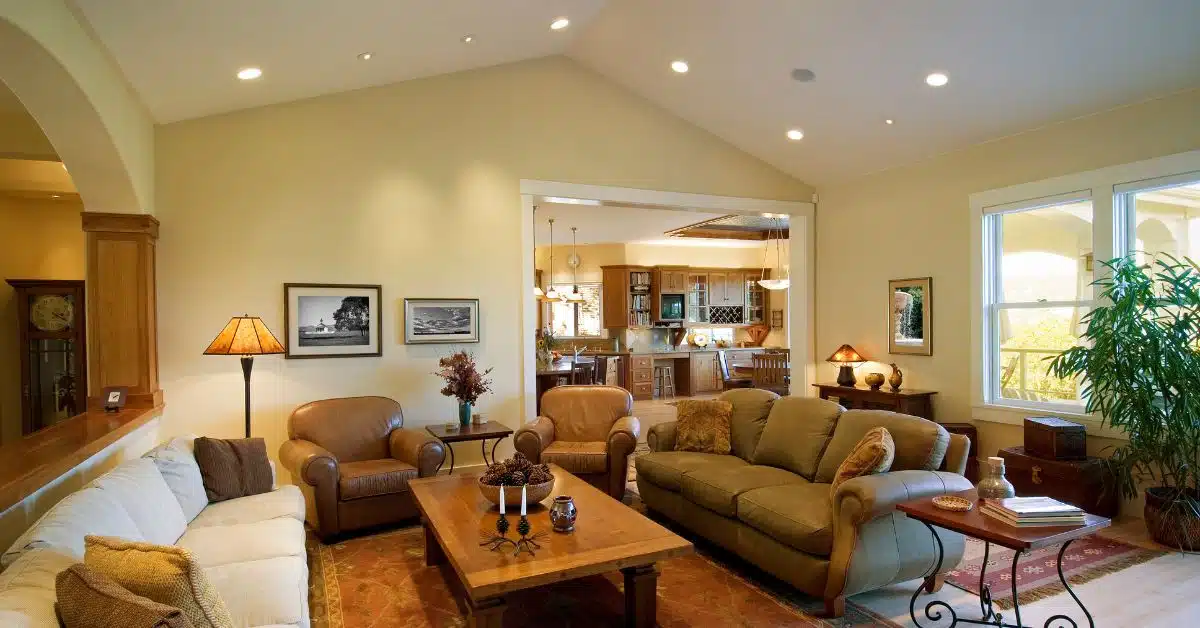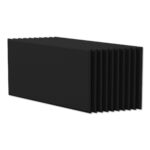Echoes are sound waves that reflect off hard surfaces and can severely impact the quality of your living space. Fortunately, tackling this issue doesn’t require a complete home overhaul. This comprehensive guide provides practical, modern solutions to help you reduce and manage echo, ensuring a more pleasant and efficient acoustic environment. Try these three tips for addressing echo issues in your home today.
Cover Reflective Surfaces
Homes typically have many hard surfaces that can reflect sound waves, creating a “bathroom shower” echo effect. This effect might be pleasant when singing alone but becomes distracting, makes conversations difficult, and degrades the audio quality of movies and TV shows.
Cover these reflective surfaces with soft materials or acoustic panels to minimize sound wave reflections and effectively reduce echoes. Doing so creates a quieter and more controlled acoustic environment, improves speech clarity, and makes listening to music more enjoyable.
Set Accurate Expectations
Understanding the difference between echo reduction and sound blocking is an essential tip for addressing echo issues in your home. While acoustic panels effectively reduce echo within a room, it’s important to clarify that they do not block sound.
Echo reduction and sound blocking are two fundamentally different concepts and require different solutions. Acoustic panels are the answer to improving the quality of sound within the room. You will need to build or add soundproof walls and doors to block sound and keep it from leaving a room and spilling into other areas of the house. Soundproofing is beyond the scope of this article, but it is important for you to clearly define your objectives to ensure success.
Soft materials such as fabric-covered seating and curtains can help reduce echo; however, these items may not be enough and are typically not as effective as installing acoustic panels.
Carpeted floors and drop-in tile ceilings are other options that may help reduce echo. However, these options may not always align with your aesthetic preferences or design goals. While effective, carpets may not always suit every room, especially high-traffic areas or kitchens where spills are common.
Ensure Proper Acoustic Panel Placement
Plan to spread your acoustic panels evenly around the space. Consider installing them on your walls, ceilings, or both as your room’s layout allows. The goal is to create a balanced environment that distributes sound efficiently.
Get advice to determine the number of panels you’ll need. Using too many or too few panels is wasteful so be sure to consult the experts when planning your project. This step is crucial to avoid undertreating or over-treating your space, which can either leave you with persistent echo issues or make your room feel unnaturally dampened.
Also, plan for proper spacing in your layouts. Frameless acoustic panels placed too close together look crowded and do not allow for sound absorption on their sides. We recommend you separate your acoustic panels by at least six inches of empty space to give them room to absorb sound and present a clean, stylish aesthetic.
A well-treated space can make all the difference, whether you’re hosting a virtual meeting or enjoying a movie night with family. Follow these tips and leverage modern acoustic solutions to create a serene and functional living environment free from the distractions of unwanted echo.





